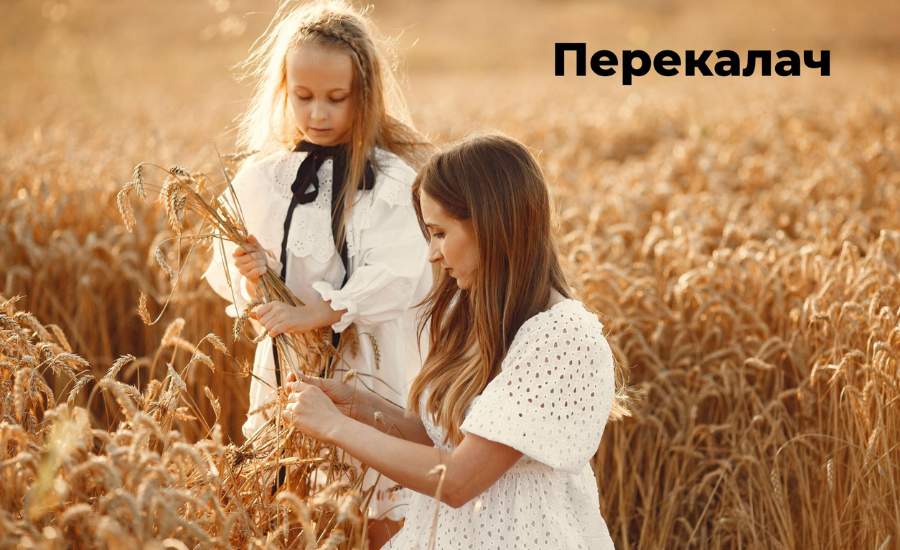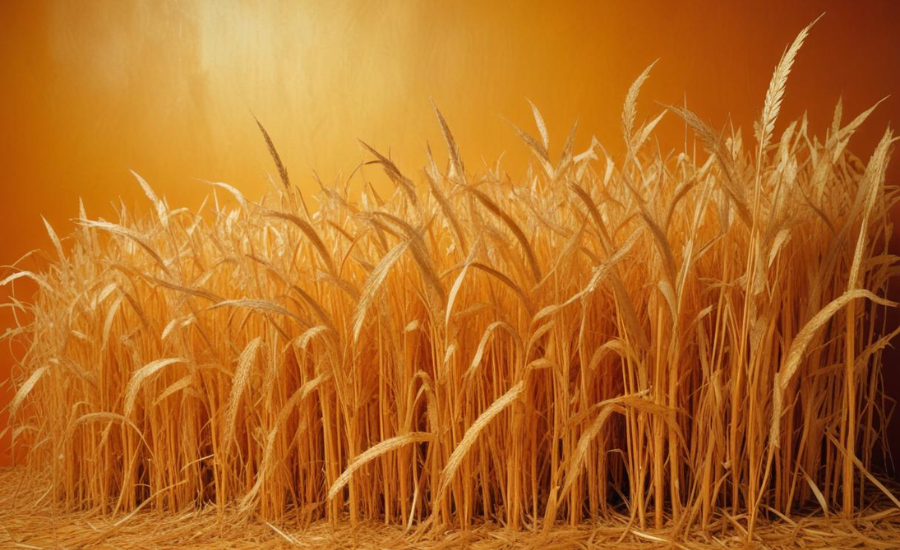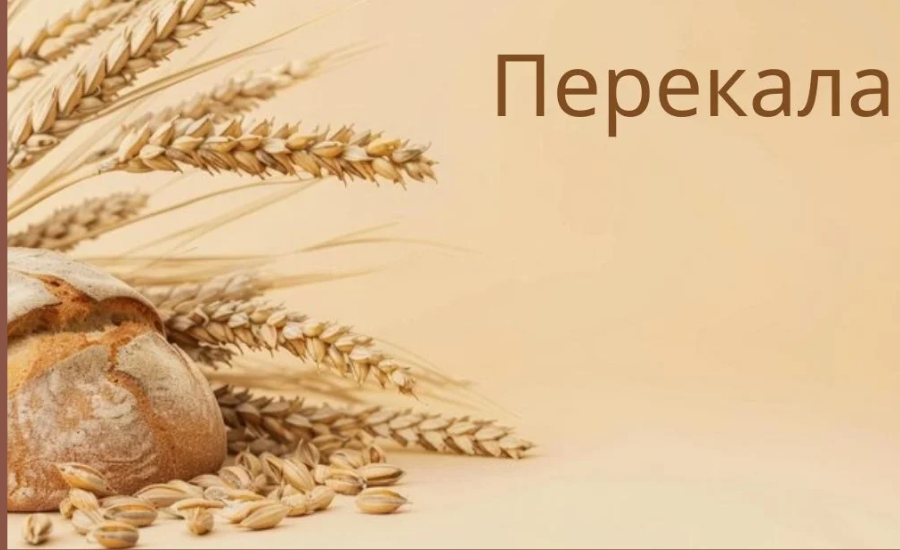At the core of Ukrainian tradition is Перекалач (Perekalach), a bread rich in historical and cultural importance. This distinctive bread, central to numerous Ukrainian festivities and rituals, provides a captivating insight into the heritage and culinary craftsmanship of Eastern Europe. This detailed guide will delve into the history, cultural role, and customs associated with Перкалач, examining its significance in Ukrainian culture and its relevance today.
What Is Перкалач (Perekalach)?
Перкалач (Perekalach) is a traditional Ukrainian bread that goes beyond its role as a delicious baked good; it embodies significant cultural values such as unity, prosperity, and festive celebration. This intricately braided bread is commonly associated with major events like weddings, Christmas, and other religious occasions, highlighting its deep-rooted place in Ukrainian customs and traditions. Its preparation and presentation during these key celebrations underscore its role as a cherished symbol within Ukrainian culture.
The Art and Craft of Weaving Перкалач (Perekalach)

Techniques and Materials
Creating Перкалач (Perekalach) involves a blend of artistry, skill, and meticulous craftsmanship. The process begins with selecting the right materials, traditionally natural fibers such as wool or cotton, though silk is also an option depending on personal preference. These fibers are dyed using organic pigments sourced from plants, minerals, and insects, resulting in vibrant, long-lasting colors.
The weaving of Perekalach is executed on a loom, where artisans create intricate patterns by interlacing threads. The use of various tools—such as shuttles, heddles, and beaters—enables the weaver to manipulate the yarns and achieve the desired designs. Patterns can range from simple geometric shapes to elaborate floral or animal motifs.
Mastering the art of Perekalach weaving requires extensive practice and dedication. Attention to detail is crucial, as weavers must carefully consider how different colors and textures will interact to produce a final product that is both visually appealing and durable enough for everyday use.
Distinctive Features of Перекалач (Perekalach)

Shape and Symbolism
Перекалач (Perekalach) is renowned for its distinctive shape, typically crafted into a circular or oval form. This design symbolizes the concept of eternity and the cyclical nature of existence. The intricate braiding is not only visually striking but also represents the weaving together of life’s joys and challenges, a deeply ingrained concept in Ukrainian tradition.
Flavor and Texture
The flavor profile of Perekalach is notably unique. It boasts a subtle sweetness and a rich, buttery taste, derived from its traditional ingredients. The texture of the bread is soft and airy, complemented by a golden-brown crust that provides a satisfying crunch. This blend of flavors and textures makes Perekalach a versatile bread, suitable for enjoying on its own or alongside a variety of dishes.
Ingredients and Preparation of Перекалач
Key Ingredients
- Flour: Generally wheat flour, ensuring a soft and fluffy texture.
- Yeast: Vital for leavening the dough.
- Milk: Contributes a rich flavor to the bread.
- Eggs: Add color and enhance the flavor.
- Butter: Creates a tender, delicate crumb.
- Sugar: Imparts a light sweetness.
- Salt: Balances the overall taste.
Preparation Process
- Dough Preparation: Mix flour, yeast, sugar, and salt. Incorporate warm milk, melted butter, and beaten eggs into the dry ingredients.
- First Rise: Allow the dough to rise in a warm location until it has doubled in volume.
- Shaping: Divide the dough, form it into long ropes, and braid them into the traditional shape.
- Baking: Transfer the braided dough to a baking sheet, let it rise again briefly, and bake in a preheated oven until golden brown.
- Cooling and Serving: Let the bread cool on a wire rack. Serve it warm or at room temperature, optionally with butter, honey, or jam.
The Role of Перекалач in Cultural Festivities
Перекалач holds a prominent place in various cultural celebrations, transcending its role as a mere food item. This bread is integral to significant events like weddings, Easter, and Christmas, where it serves both as a symbol and a centerpiece.
At weddings, Перекалач is often shared among guests, symbolizing unity and the merging of families. This act reflects the bread’s role in celebrating communal ties and goodwill.
During Easter, Перекалач is decorated with elaborate designs and symbols, echoing the religious and cultural traditions of the region. The preparation of Перекалач for Easter is frequently a collaborative effort, bringing families together to engage in this meaningful tradition. This shared activity not only highlights the bread’s cultural importance but also strengthens community bonds and fosters a sense of continuity among those who uphold this cherished practice.
The Evolution of Перекалач in Contemporary Culture
In contemporary times, Перекалач continues to be a symbol of tradition while adapting to modern tastes. Though its role in festive and ceremonial occasions remains strong, this bread has also become a staple in everyday life. Modern bakers have embraced creativity by introducing innovative flavors and variations, broadening its appeal beyond traditional contexts. Despite these modern twists, the core of Перекалач—its deep cultural significance and traditional preparation methods—remains intact.
Перекалач in Ukrainian Traditions

Wedding Customs In Ukrainian wedding traditions, Перекалач holds a significant place:
- It is commonly presented to the newlyweds as a gesture of welcome.
- The bride and groom may share a piece of this bread as part of their first meal together.
- It is also distributed to guests to symbolize shared prosperity and good wishes.
Harvest Festivals During harvest festivals, Перекалач symbolizes the rewards of hard work and the anticipation of future prosperity. It is often prominently displayed and shared among members of the community.
Religious Observances In certain Ukrainian Christian traditions, Перекалач is consecrated during religious services. This practice is especially common during harvest festivals and Easter, underscoring its spiritual significance.
Nutritional Aspects of Перекалач
Basic Nutrition Перекалач, like most bread, primarily provides carbohydrates. Its nutritional content may vary depending on the specific ingredients used in its preparation.
Potential Health Benefits
- Whole Wheat Flour: When made with whole wheat, Перекалач can be a good source of dietary fiber.
- Seeds and Nuts: Adding these ingredients can enhance the bread’s protein and healthy fat content.
- Energy Source: As part of a balanced diet, Перекалач can offer sustained energy.
Moderation and Balance Despite its cultural importance, it’s advisable to enjoy Перекалач as part of a diverse diet, particularly for individuals managing their carbohydrate intake.
Перекалач Across the Globe
Ukrainian Diaspora Ukrainian expatriate communities around the world continue to uphold the tradition of baking Перекалач, especially during festive periods and significant events. This practice helps them maintain a tangible link to their cultural roots.
International Recognition With the growing global fascination with various culinary traditions, Перекалач is gaining international attention. It occasionally appears in global bread showcases and culinary festivals, introducing its unique heritage to a broader audience.
Cultural Parallels Many cultures have their own versions of ring-shaped breads, such as the Jewish challah and Greek koulouri. Перекалач shares similar symbolic meanings with these breads, reflecting shared cultural values and traditions.
Contemporary Significance of Перекалач
Cultural Preservation In modern Ukraine and within Ukrainian expatriate communities, Перекалач remains a significant cultural symbol. It continues to be prepared and shared during key events, helping to preserve and celebrate Ukrainian heritage.
Culinary Tourism The growing global interest in traditional foods has brought Перекалач into the spotlight for culinary travelers seeking authentic Ukrainian experiences. This bread is now featured in food tours and cultural explorations.
Innovative Culinary Uses Modern chefs are exploring creative ways to incorporate Перекалач into contemporary dishes, blending its traditional significance with innovative culinary practices. This fusion of old and new reflects a dynamic approach to traditional recipes.
Case Studies: Effective Applications of Перекалач
Successful Implementations Перекалач has proven its value in various fields through notable case studies. For instance, prominent ceramic artists have harnessed this technique to produce intricate and durable pottery. Similarly, metalworkers have achieved significant advancements in creating robust and visually appealing metal pieces by integrating Перекалач into their processes.
Essential Tools and Equipment The successful execution of Перекалач relies on specific tools and equipment. For ceramics, high-temperature kilns are essential. In metalworking, controlled furnaces are required to manage precise temperatures. Using the appropriate equipment ensures both the safety and effectiveness of the Перекалач process.
The Cultural Importance of Перекалач

Перекалач holds a cherished place in Ukrainian culture, featuring prominently in family gatherings, religious observances, and national festivities. This bread serves as a tangible link to Ukrainian heritage and traditions. For instance, during Christmas, Перекалач is an integral part of the Sviata Vecheria, the traditional Christmas Eve feast, symbolizing prosperity and a bountiful harvest. At Easter, a special variant known as paska is prepared, adorned with intricate designs that reflect the season’s significance. Weddings also feature Перекалач, with a large, beautifully decorated loaf presented to the newlyweds as a symbol of a promising future together.
The Future of Перекалач
As technology progresses, the tradition of making Перекалач may change. New advancements in heating and materials could improve how this bread is made. In the future, we might see new ways to prepare Перекалач and new uses for it. Despite these changes, the goal will be to keep the traditional values and cultural significance of Перекалач alive while adapting it to modern times.
FAQs
- What is Перекалач?
- Перекалач is a traditional Ukrainian braided bread often used in cultural and religious celebrations. It is known for its unique shape and symbolic significance, representing unity and continuity.
- What are the traditional ingredients used in Перекалач?
- The traditional ingredients include wheat flour, yeast, milk, eggs, butter, sugar, and salt. These ingredients come together to create a soft, slightly sweet bread with a tender crumb.
- How is Перекалач prepared?
- The preparation involves mixing flour, yeast, sugar, and salt, then adding warm milk, melted butter, and beaten eggs. After kneading the dough, it is left to rise, braided into shape, and baked until golden brown.
- What role does Перекалач play in Ukrainian celebrations?
- Перекалач is central to various Ukrainian celebrations, including weddings, Easter, and harvest festivals. It symbolizes abundance, unity, and the continuity of cultural traditions.
- How has Перекалач evolved in modern times?
- While traditional recipes remain popular, modern bakers have introduced new variations and flavors. Перекалач is now enjoyed not only during special occasions but also as a part of everyday life.
- What are some future trends for Перекалач?
- Future trends may involve the integration of advanced technologies and materials in its preparation, leading to innovative methods while preserving its traditional significance.
Conclusion
Перекалач is more than just a bread; it is a symbol of Ukrainian cultural heritage and tradition. Its role in various celebrations highlights its deep connection to community and continuity. As we look to the future, advancements in technology and new methods may enhance how Перекалач is made and enjoyed, but the essence of this cherished bread will continue to embody the rich cultural traditions it represents.
Read More: News Week Blog



